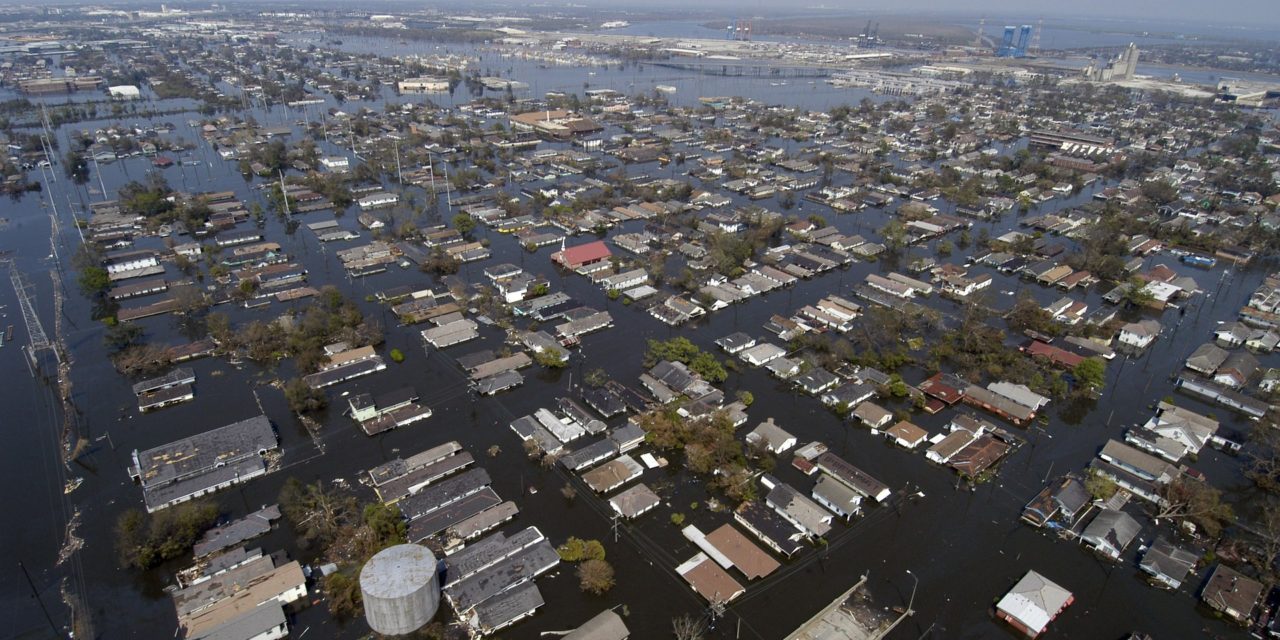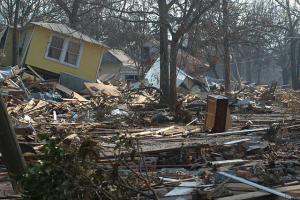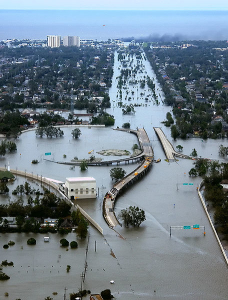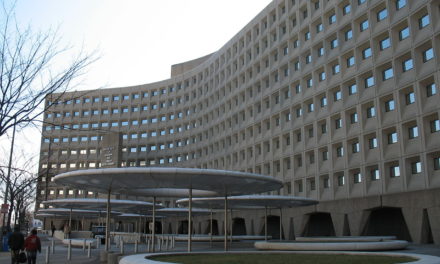Ten years ago, images of the Superdome, the home of the New Orleans Saints, were on every television channel. It was the end of August, and thousands of New Orleans residents huddled inside waiting out the devastation of Hurricane Katrina.
First making landfall in South Florida on the morning of August 25, Hurricane Katrina then passed through the Gulf of Mexico. On the morning of August 29, 2005, it struck the Gulf Coast of Louisiana with sustained winds of 100 to 140 miles per hour and heavy rain (8 to 10 inches in many areas, even more in some places). When the skies finally cleared, the destruction left behind by the storm is something many people will not forget. Streets flooded. Homes and buildings washed away. At least 1,800 people died and roughly 1.3 million people were displaced. It was one of the worst environmental disasters in our country’s history.
A decade later, much of New Orleans has been rebuilt, but there are still areas that have not recovered—places where homes were never rebuilt and stores never reopened.
Following Hurricane Katrina, Greenfield Advisors worked on numerous cases involving environmental damages to the area. One of those projects was Turner v. Murphy Oil, a class action involving 6,700 properties (residences, mixed-use, and commercial) that suffered an oil spill from a nearby refinery. As a result of levee breaches during Hurricane Katrina, floodwaters up to 12 feet high swept into the Murphy Oil Refinery in St. Bernard Parish, Louisiana. A 250,000-barrel aboveground storage tank at the refinery was damaged and dislodged in the flooding, releasing more than one million gallons of mixed crude oil and affecting homes and businesses in an adjacent residential neighborhood. Greenfield Advisors was hired to evaluate the real estate and property value effects of the oil spill in St. Bernard Parish and to opine regarding class certification and fairness of the class settlement. The $330 million class settlement included a $55 million buyout program, a $120 million compensation program, a credit for $83 million in compensation already paid, and a $71 million remediation program.
We also consulted on various levee breach cases. As we discussed in a previous post, Southern Louisiana is intensively engineered with canals, levees, floodwalls, locks, dams, and flood control systems. A group of New Orleans property owners filed class action lawsuits against the U.S. Army Corps of Engineers as well as other defendants for their negligence in the design and maintenance of certain canals and flood protection structures leading to numerous levee failures and catastrophic flooding during and just after Hurricane Katrina. Greenfield Advisors was hired to opine regarding class certification. The court found that the Corps of Engineers was immune from lawsuit under federal law.
In addition, our Managing Director, Dr. John Kilpatrick, was the lead author of “The Aftermath of Katrina: Recommendations for Real Estate Research,” a peer-reviewed article written at the invitation of the Journal of Real Estate Literature to provide authoritative guidance to academics and real estate practitioners conducting scholarly research into the real estate impacts in New Orleans following the 2005 hurricane. The article recognizes that holistic, market-wide analytical methods are necessary to understand the economic and property value issues in the affected areas.
A decade after Katrina, we can look back and see how New Orleans is recovering. The work is far from over, but we are proud that we were able to part of the process.








Recent Comments